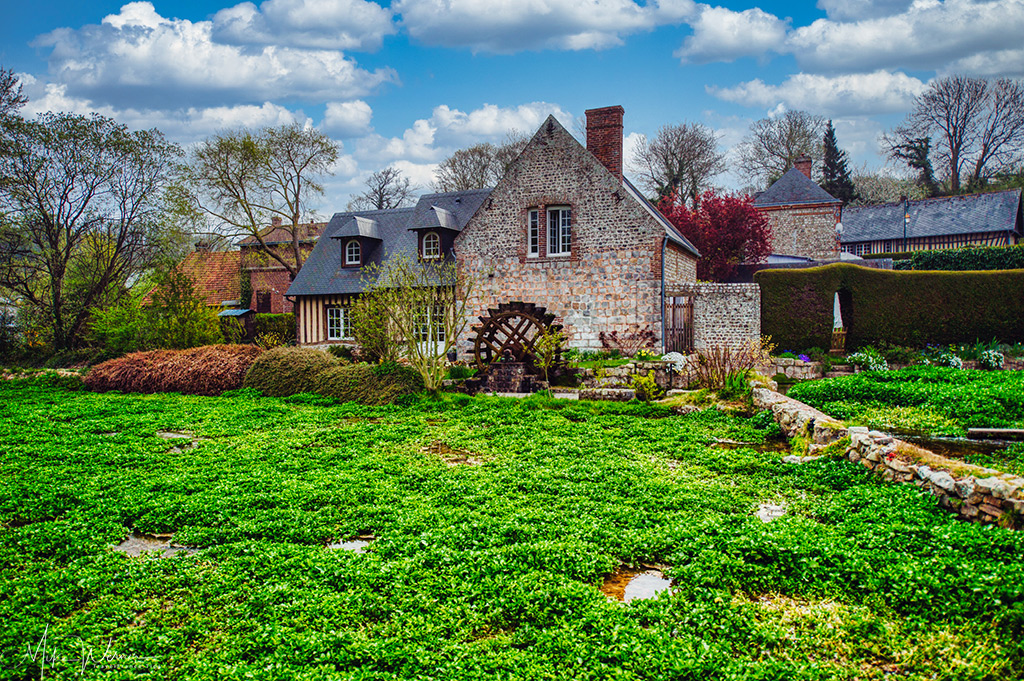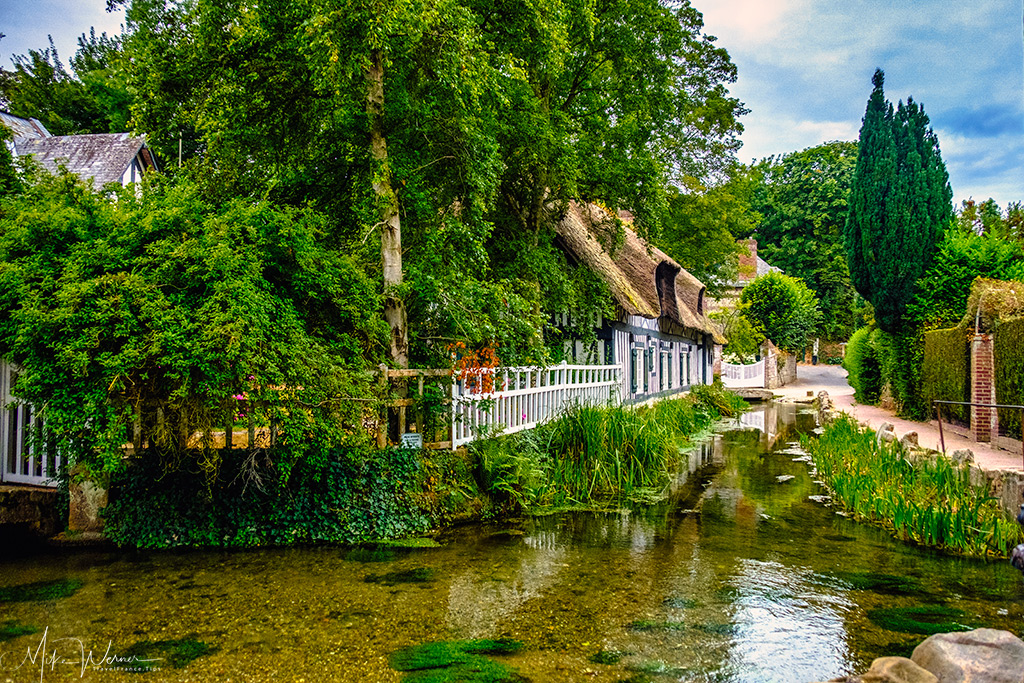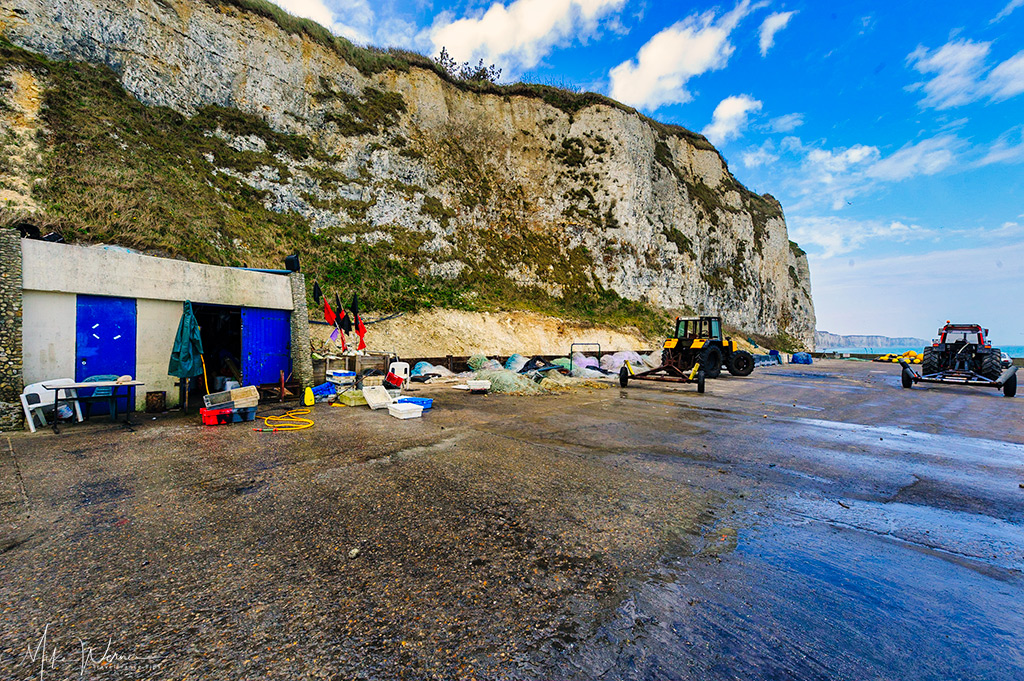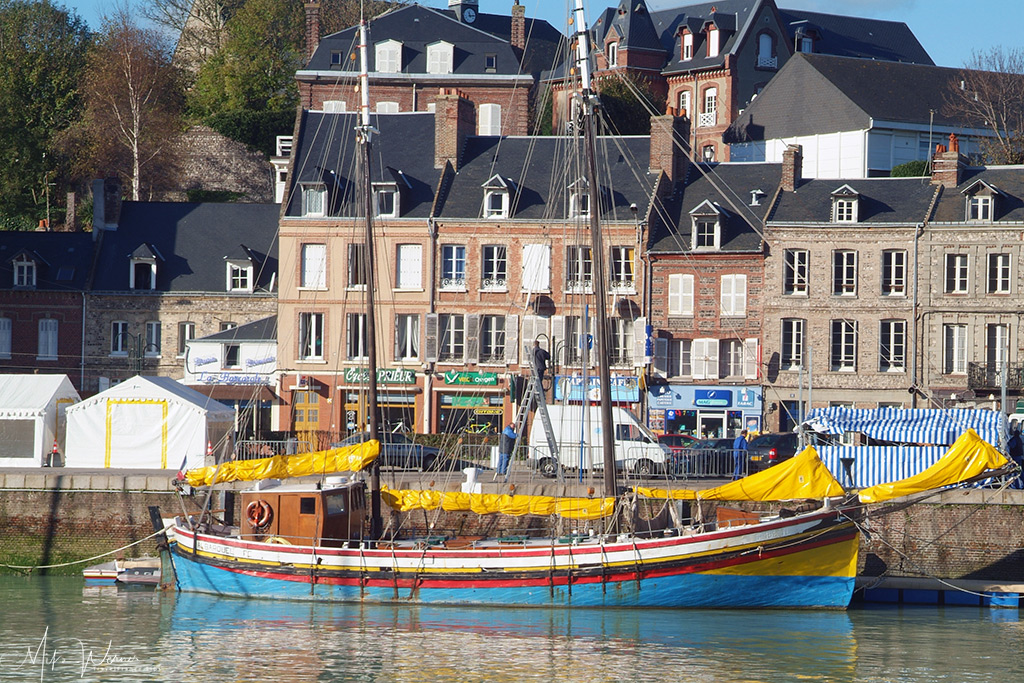This page forms part of a series of pages dedicated to the many artists who painted in Veules-ls-Roses. A full list of all the artists with a link to their works can be found at the bottom of this page.
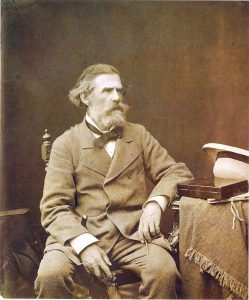
Movement(s): –
Alexey Petrovich Bogolyubov (1824 – 1896) was a Russian landscape painter. Bogolyubov was born in the Pomeranie village of Novgorod Gubernia. His father was retired colonel Pyotr Gavriilovich Bogolyubov. Bogolyubov’s maternal grandfather was the well-known philosopher and social critic Alexander Radishchev.
In 1841, Alexey graduated from military school, serving in the Russian Navy and travelling with the fleet to many countries. In 1849, he started to attend classes of the Saint Petersburg Academy of Arts, where he studied under Maxim Vorobiev. The young painter was greatly influenced by Ivan Ayvazovsky. In 1853, he finished the Academy with a major Gold medal. He retired as a navy officer and was appointed an artist to the Navy headquarters.
From 1854 to 1860, he travelled around Europe and worked prolifically. In Paris, he admired the artists of the Barbizon School. French painters Camille Corot and Charles-François Daubigny were good friends and collaborators with Bogolyubov.
He was Nikolay Nikolayevich Gritsenko’s professor in art.
After 1873, Bogolyubov lived primarily in Paris, because of his heart condition. His house was like a Russian colony: frequent visitors included Ivan Turgenev, Ilya Yefimovich Repin, Vasily Polenov, Mark Antokolski, Vasili Vasilyevich Vereshchagin.
Bogolyubov died on 3 February 1896 in Paris. After his death, Bogolyubov left all his money and capital (around 200 thousand Russian rubles approximately US$6 million) to the museum and its painting school. The school was opened after Bogolyubov’s death and named Bogolyubov’s Painting School. Among painters who attended Bogolyubov’s School were such important modernist painters as Victor Borisov-Musatov, Alexei Karev and Pavel Kuznetsov.
Click here to read Bogolyubov’s full bio on Wikipedia.
NOTE: Click on any image below for a bigger version (no new window will open).
NOTE: A black box like this one, means that there is an explanation text about today’s situation of the painting above it.
NOTE: Click on this photo icon ![]() anywhere below a painting to see a photo of what the area looks like today.
anywhere below a painting to see a photo of what the area looks like today.
NOTE: A blue box like this one, means there is an explanation or a note.
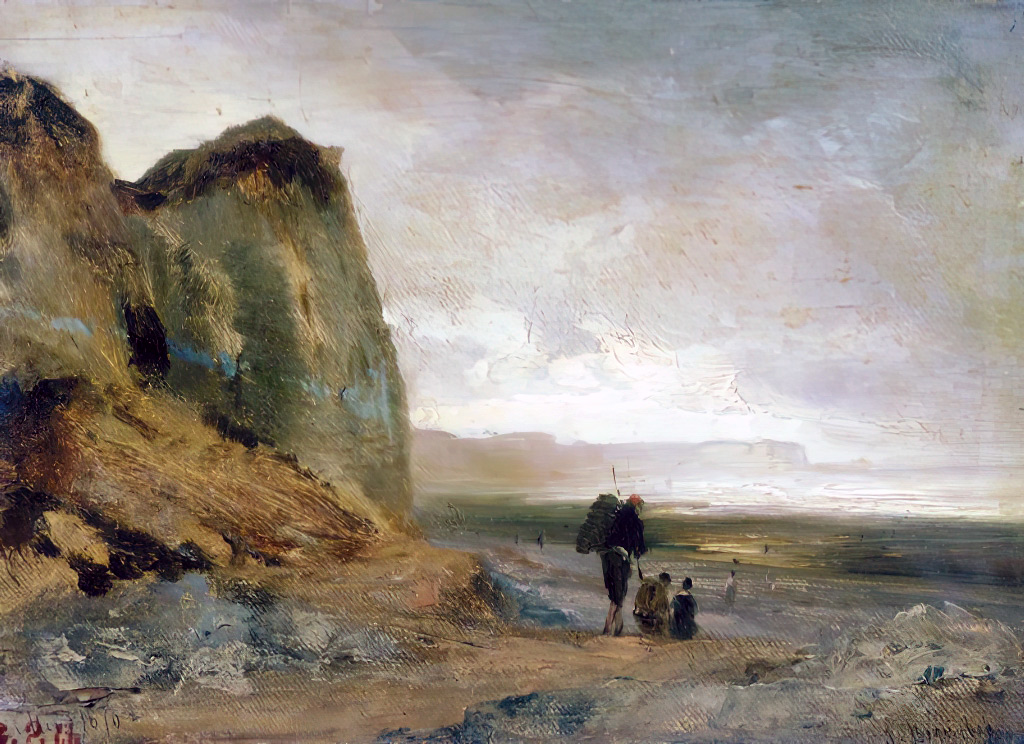
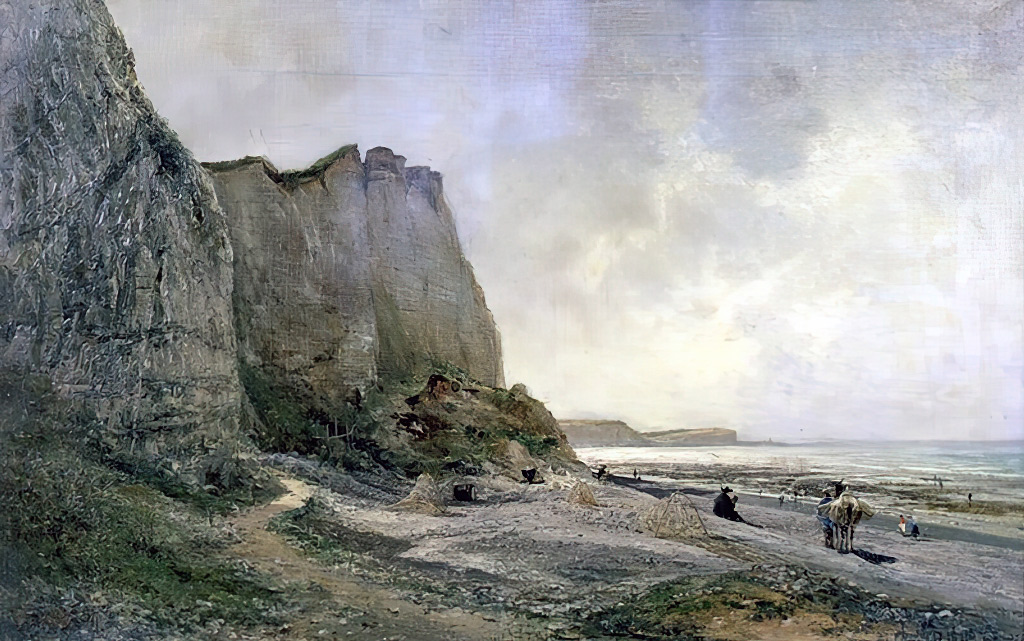
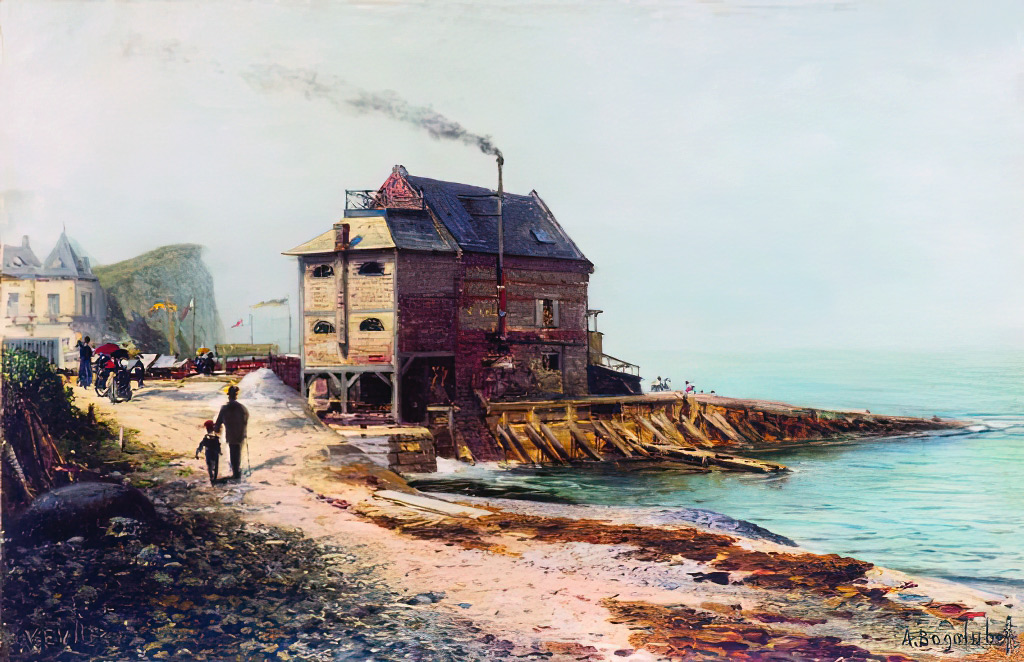
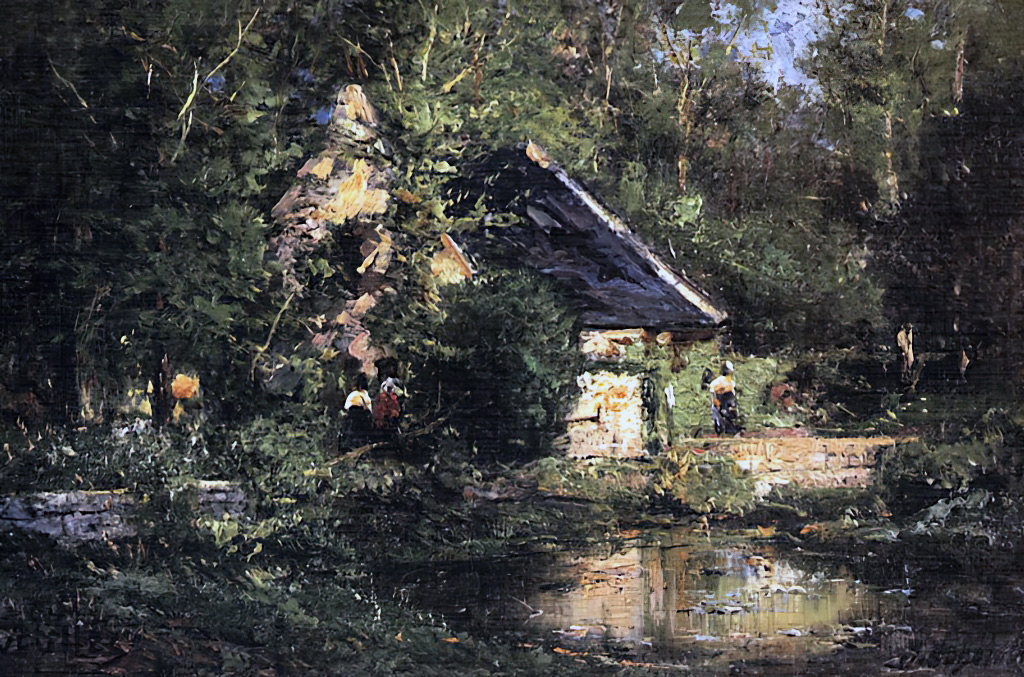
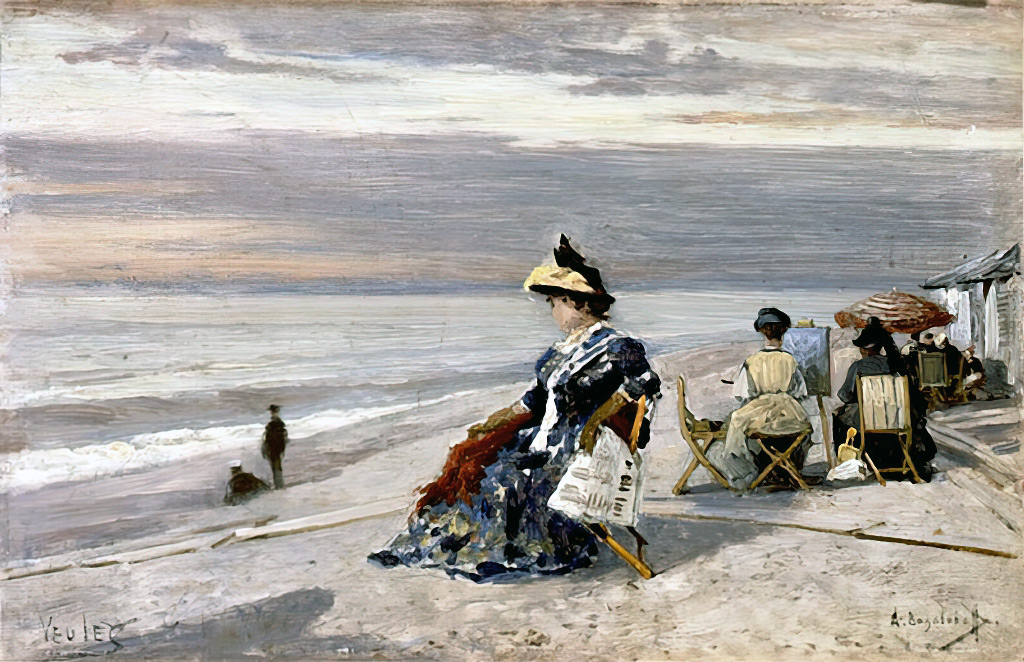
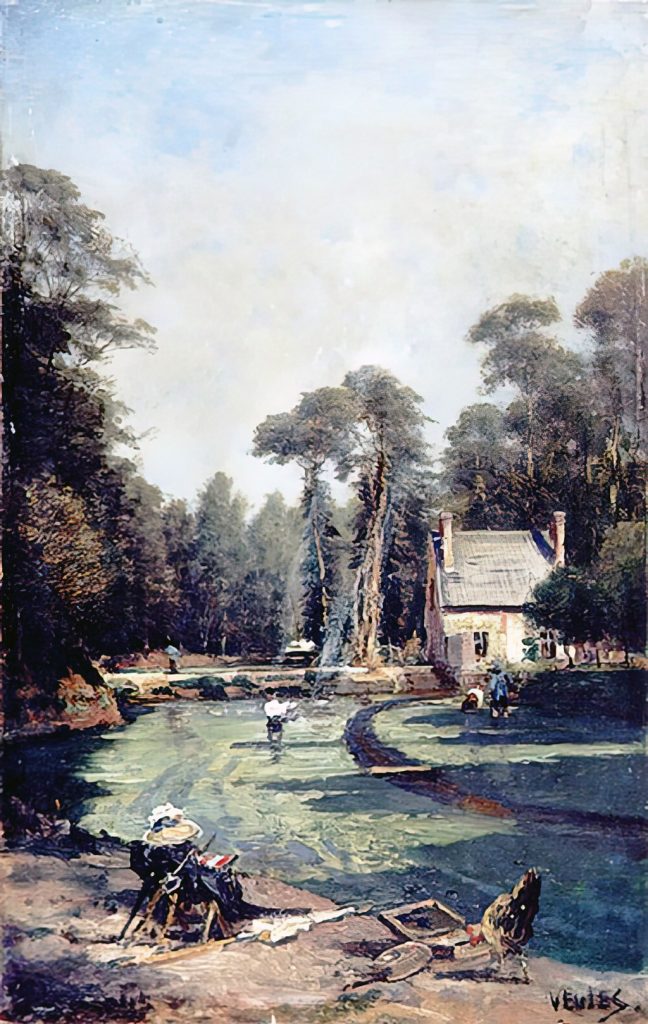
Today: You can still find many watermills in Veules. This is the main one, and in front of now a field with watercress (which are sold at a stand closeby).
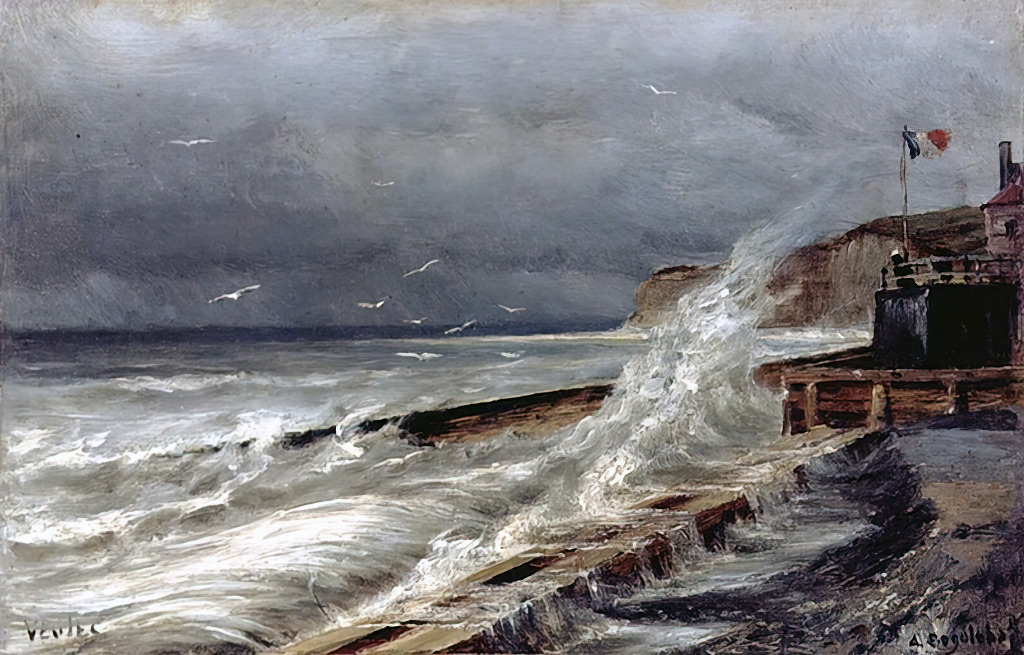
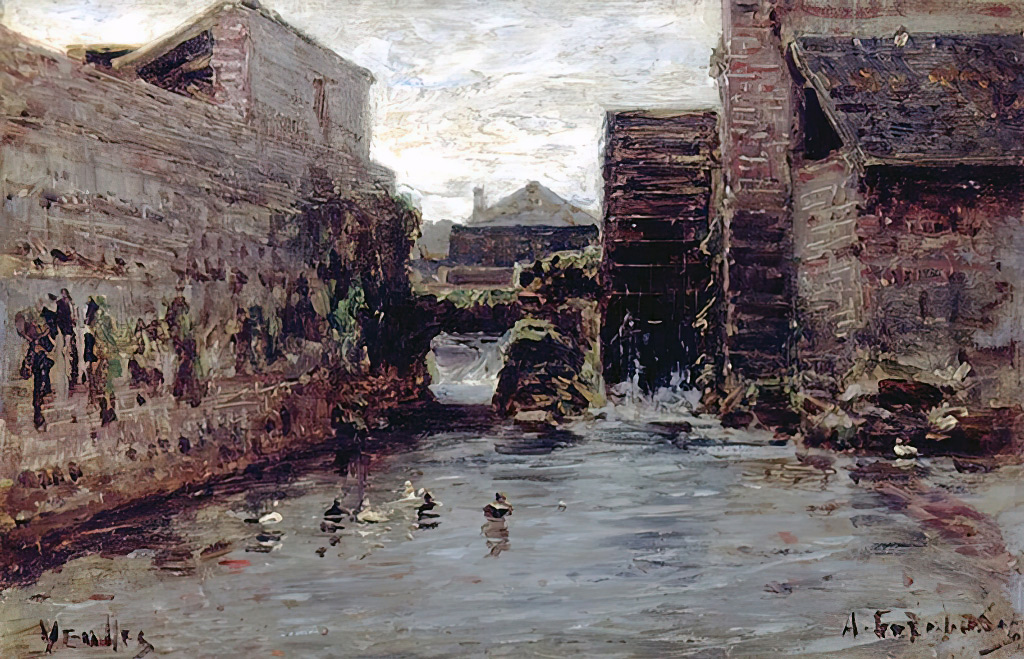
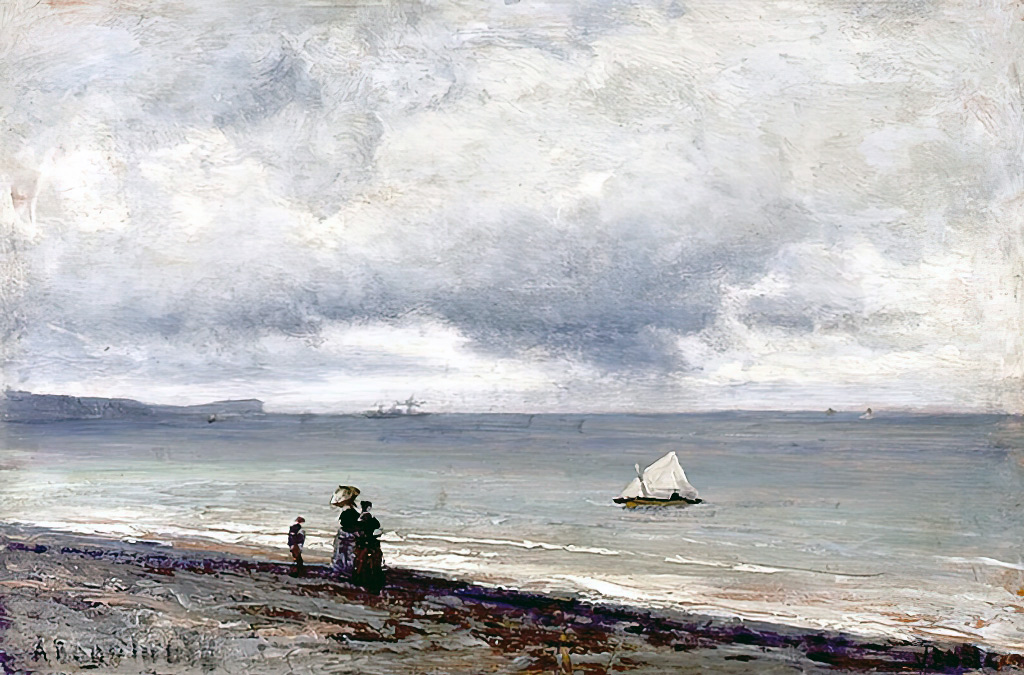
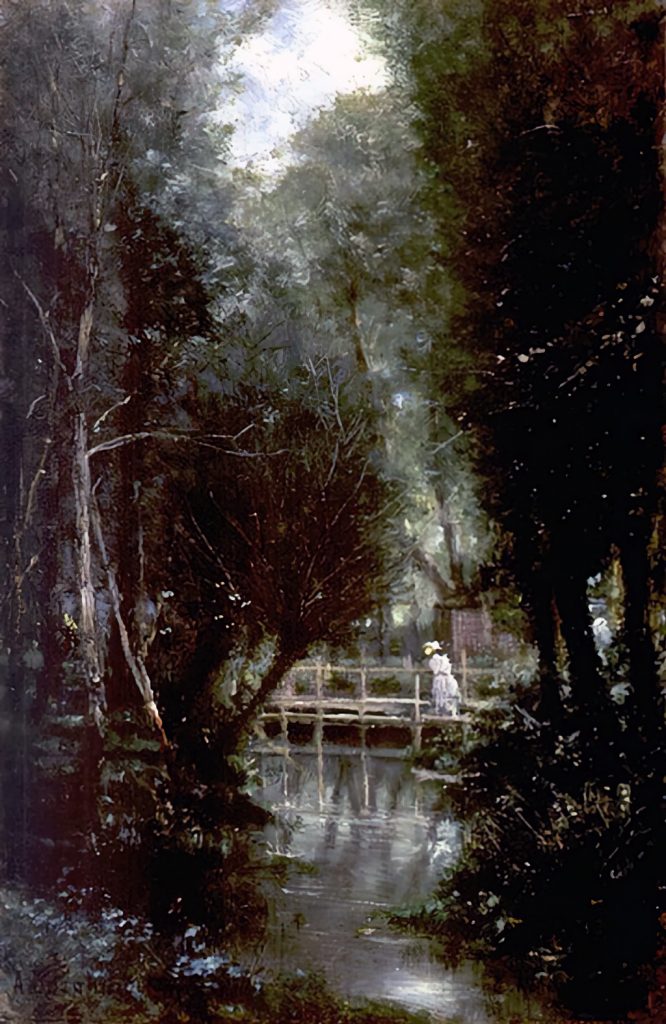
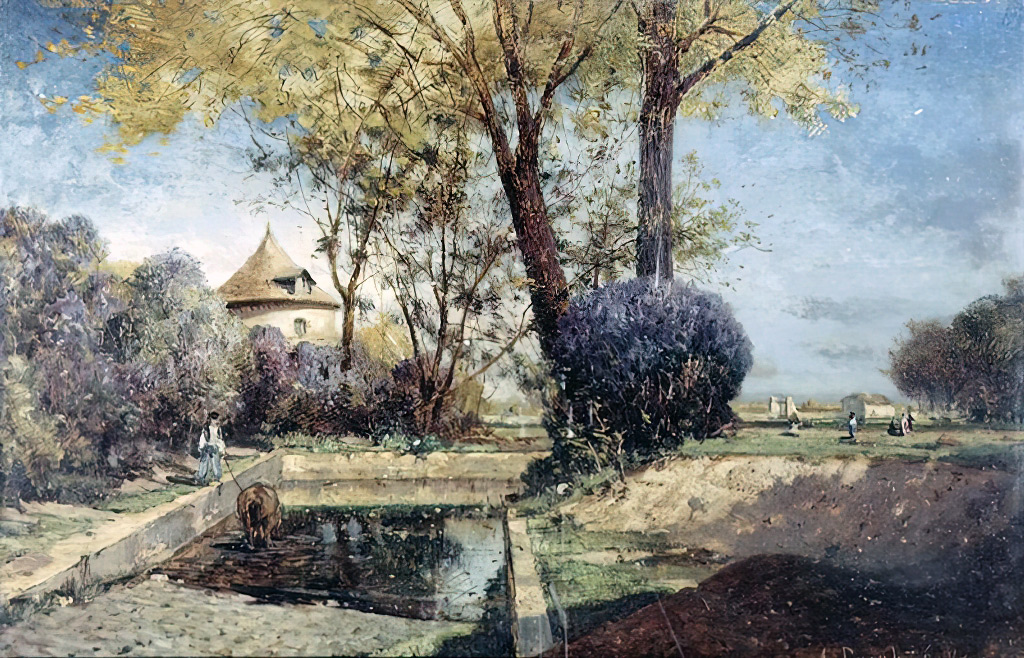
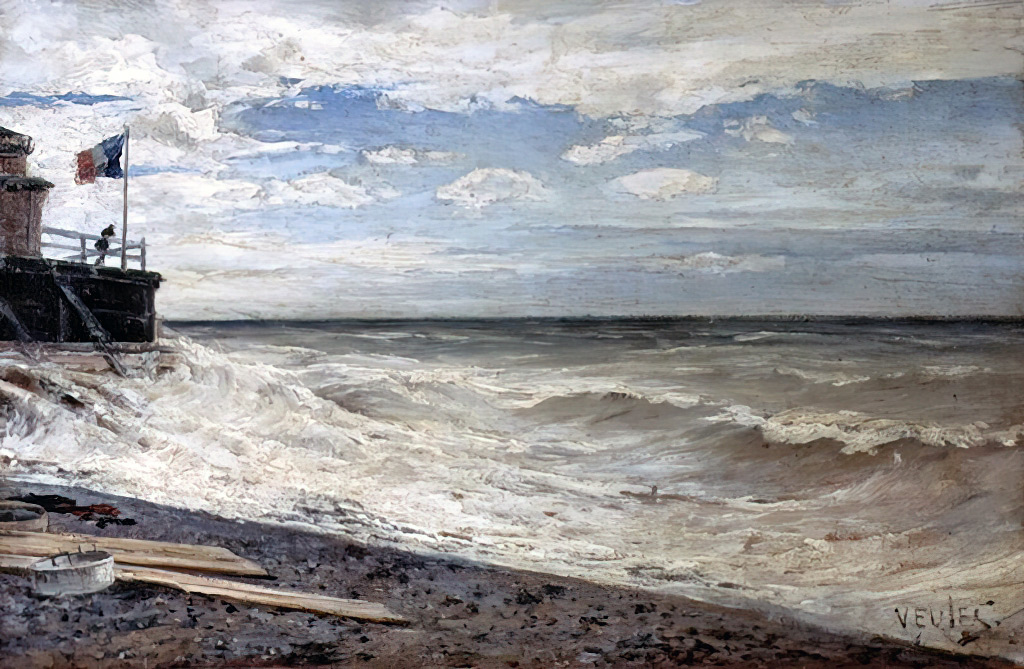
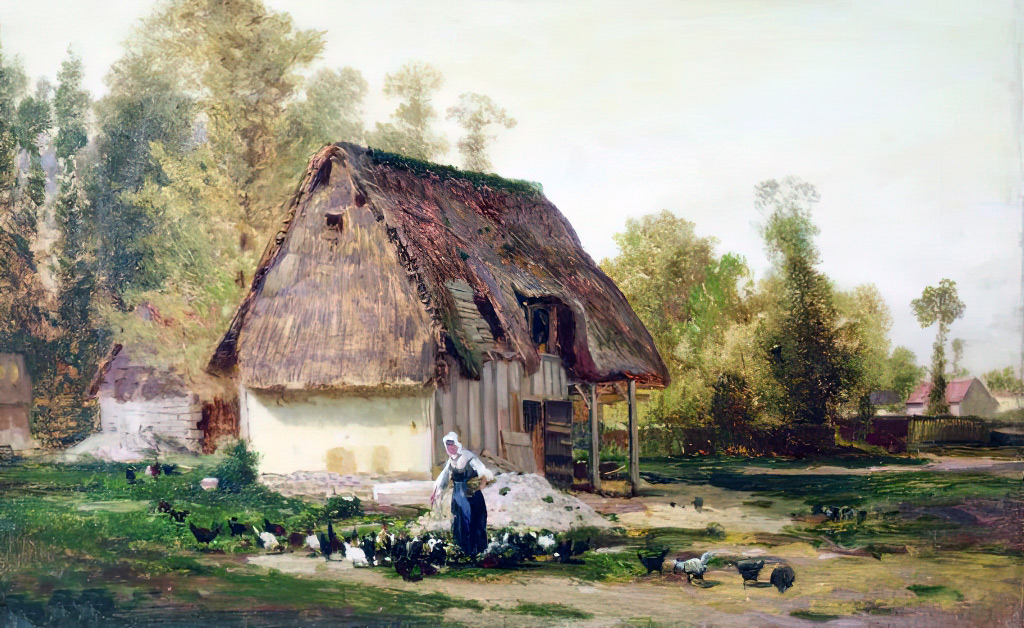
TODAY: You can still find many thatched roof cottages in Veules-les-Roses. They are all kept in good working order.
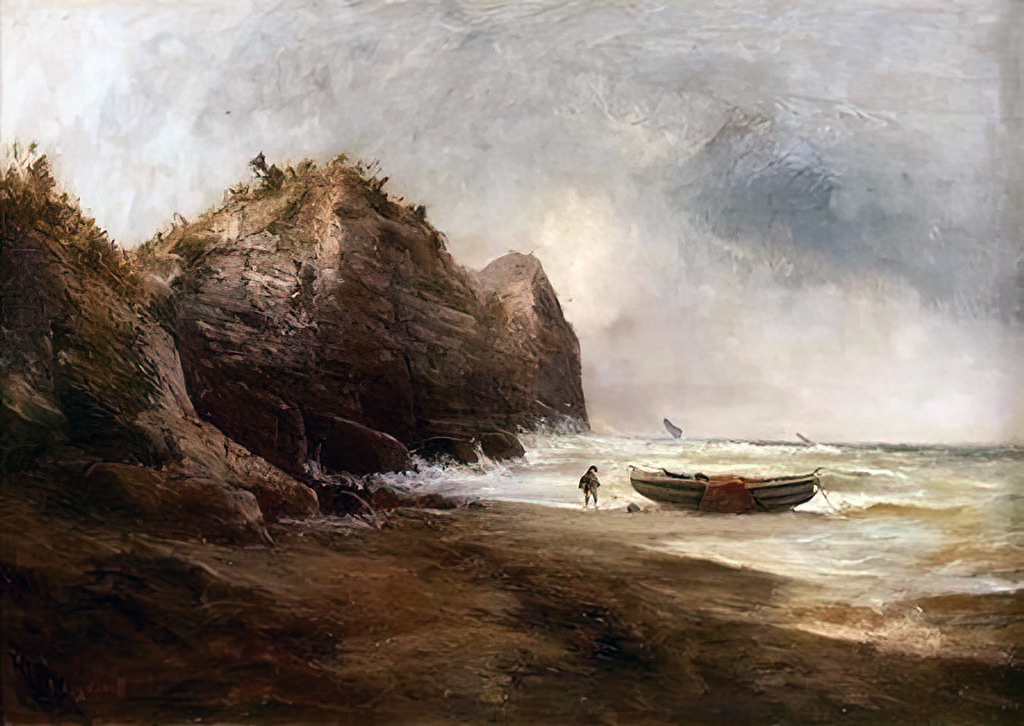
TODAY: There is no harbour for fishing boats in Veules. The fishing boats are still dragged onto land when not in use.
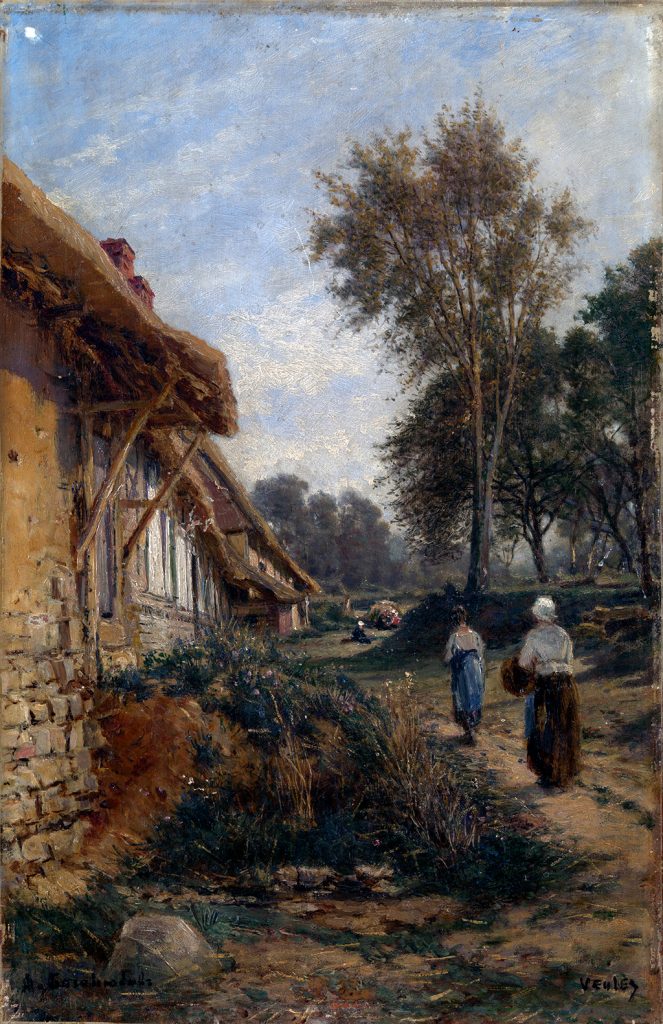
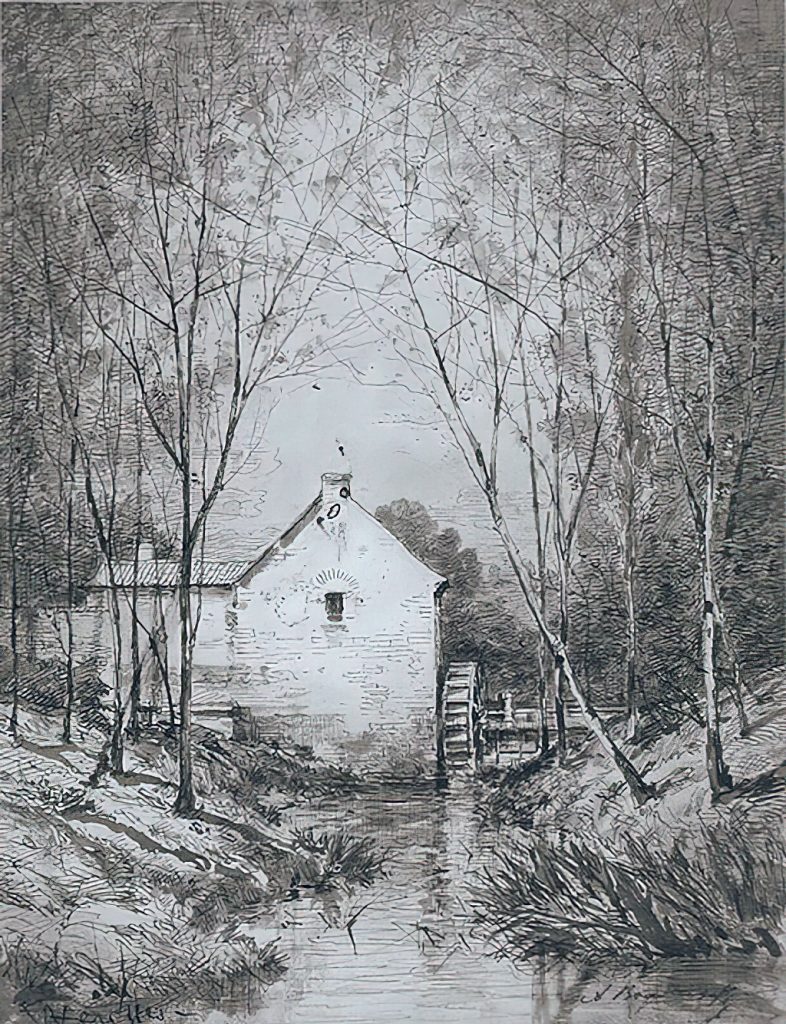
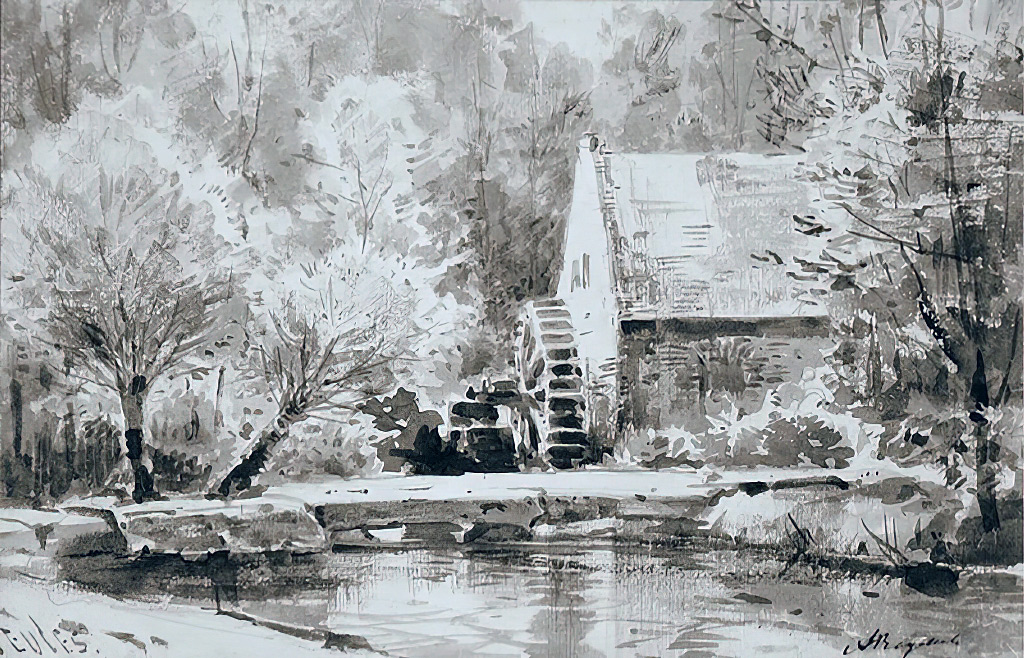
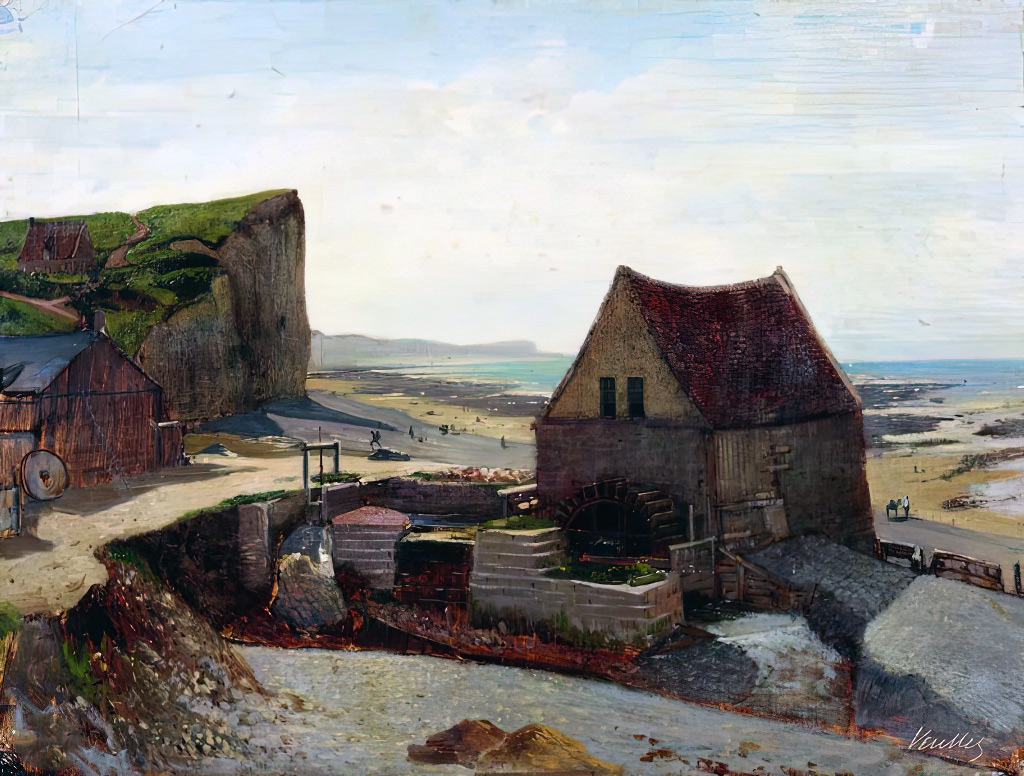
Saint-Valery-en-Caux
The town of Saint-Valery-en-Caux (population: 4,200) is located a few kilometres next to Veules-les-Roses at the West alongside the coast.
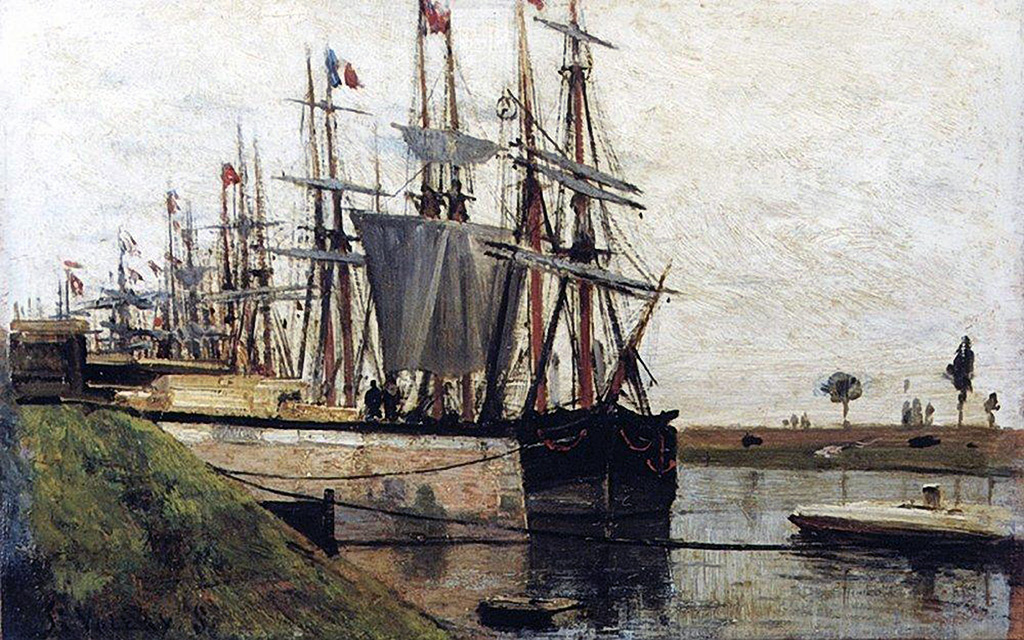
NOTE: This looks more like Saint-Valery-sur-Somme (in the North of France), but it has been categorized as Saint-Valery-en-Caux.
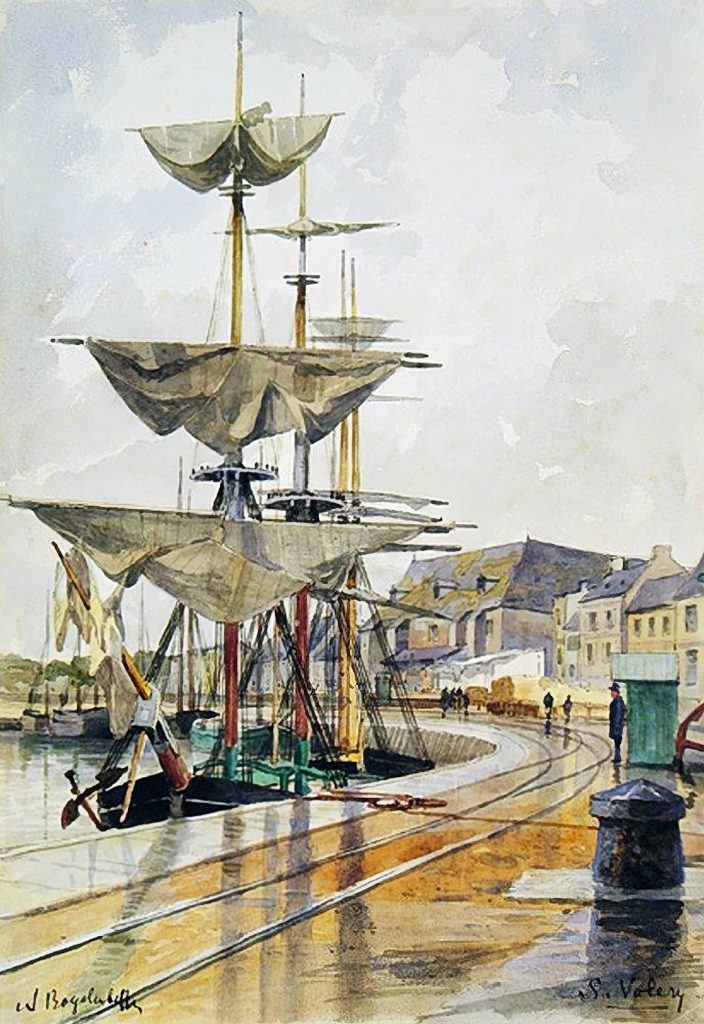
Today: There still is an active fishing fleet operating our of Saint-Valery-en-Caux, but most boats in the harbour are pleasure boats.
Alexeu (Alexei) painted in the following cities (links “⇠” to his paintings will appear below when published):
- Auvergne-Rhone-Alpes
- Vichy
- Brittany
- Brest
- Saint-Malo
- Normandy
- Cherbourg (surrounding only) ⇠
- Dieppe ⇠
- Etretat ⇠
- Fecamp (and surroundings) ⇠
- Yport ⇠
- Honfleur ⇠
- Le Havre ⇠
- Le Treport
- Rouen
- Veules-les-Roses (and surroundings) ⇠
- Nouvelle-Aquitaine
- Pays de la Loire
- Nantes
- Pornic
- Provence-Alpes-Cote d’Azur
- Marseille
- Menton
- Nice
- Toulon
Veules-les-Roses was, and still is, a popular place for artists since it’s very pretty, with France’s smallest river running through it, several watermills, watercrest fields and most thatched roof houses that are still intact after centuries. The town owns its name thanks to the many roses planted here.
Here are all the artists that have worked in Veules-les-Roses and its surroundings (a link “⇠” will appear next to their names when published):
NOTE: A “*” next to their name means the artist did NOT work in the Veules itself, instead worked nearby.
- 🇺🇸 Boggs, Frank Myers * ⇠
- 🇷🇺 Bogolyubov, Alexey (Alexei) ⇠
- 🇺🇸 Butler, Theodore Earl ⇠
- 🇬🇧 Callow, William * ⇠
- 🇬🇧 Childers, Milly ⇠
- 🇫🇷 Garneray, Ambroise Louis * ⇠
- 🇷🇺 Gritsenko, Nikolai * ⇠
- 🇳🇱 Jongkind, Johan * ⇠
- 🇫🇷 Lebourg, Albert * ⇠
- 🇫🇷 Michallon, Achille-Etna * ⇠
- 🇬🇧 Peploe, Samuel ⇠
- 🇷🇺 Polenov, Vasily ⇠
- 🇫🇷 Signac, Paul * ⇠
- 🇬🇧 Talbot, Rosamund Constance *
NOTE: You can subscribe to our new articles by entering your email address in the box on the right column (or at the very bottom of this article) and clicking on the button “Subscribe”.
You will need to check your incoming emails and validate your subscription. If you can’t see an email from us, check your Spam folder. Without validating your email address, you will not get notifications from us. WE WILL NEVER GIVE YOUR EMAIL ADDRESSES TO ANYONE!
Related Posts
- 91
 Frank Boggs was an American (and later French) painter (born in the USA, died in France). He studied art in Paris, and travelled between France (Normandy), The Netherlands, Italy and Belgium. He naturelized to French citizenship. He is buried next to his artist son in Paris. Here is the 1…
Frank Boggs was an American (and later French) painter (born in the USA, died in France). He studied art in Paris, and travelled between France (Normandy), The Netherlands, Italy and Belgium. He naturelized to French citizenship. He is buried next to his artist son in Paris. Here is the 1… - 90
 William Callow was an English landscape painter, engraver and water colourist. He travelled extensively in France, the Netherlands, Belgium, Germany, Switzerland and Italy, had a large number of pupils, and enjoyed favour with the royal family. Here is his 1 painting we found which me made outside of Veules-les-Roses in…
William Callow was an English landscape painter, engraver and water colourist. He travelled extensively in France, the Netherlands, Belgium, Germany, Switzerland and Italy, had a large number of pupils, and enjoyed favour with the royal family. Here is his 1 painting we found which me made outside of Veules-les-Roses in… - 90
 Johan Barthold Jongkind was a Dutch painter and printmaker. He painted marine landscapes in a free manner and is regarded as a forerunner of Impressionism. He did not paint in Veules-les-Roses, but instead painted in the nearby Saint-Valery-en-Caux, Normandy.
Johan Barthold Jongkind was a Dutch painter and printmaker. He painted marine landscapes in a free manner and is regarded as a forerunner of Impressionism. He did not paint in Veules-les-Roses, but instead painted in the nearby Saint-Valery-en-Caux, Normandy. - 90
- 90
 Achille Etna Michallon (1796–1822) was a French painter. Michallon was the son of the sculptor Claude Michallon and nephew of the sculptor Guillaume Francin. He travelled to Italy in 1818 and remained there for over two years. Before he had much time to develop what he had learned however, he…
Achille Etna Michallon (1796–1822) was a French painter. Michallon was the son of the sculptor Claude Michallon and nephew of the sculptor Guillaume Francin. He travelled to Italy in 1818 and remained there for over two years. Before he had much time to develop what he had learned however, he…



